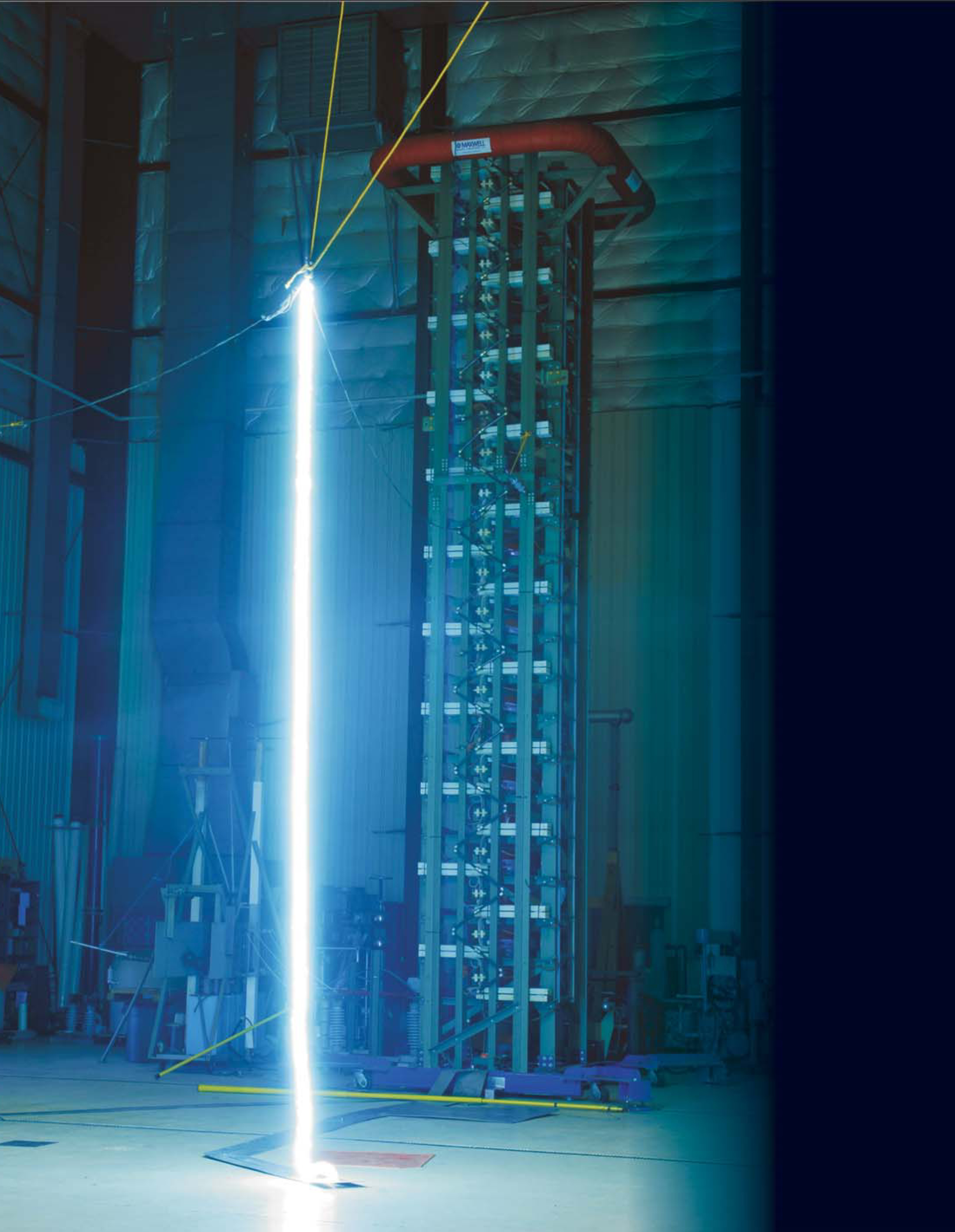Artificial lightning
DOI: 10.1063/1.3099587
Lightning is a leading cause of power outages; by some estimates it causes 30% of all power interruptions. The potential difference between thunderclouds and the ground can be more than 100 MV, and lightning strikes carry a current of tens or hundreds of kiloamps. Utility companies’ strategies to protect power lines include specially designed grounding systems and arrays of lightning arresters typically made of metal-oxide varistors. A lightning strike’s electrical surge turns the normally insulating arresters (the accordion-like cylindrical devices attached to many electric power lines) into conductors that create a short circuit to ground. Shown here is a 6-meter-long discharge—artificial lightning—from the 2.2-MV impulse generator at the National Electric Energy Testing Research and Applications Center at the Georgia Institute of Technology. With the impulse generator, salt fog chambers, and other tools, the center tests arresters, transformers, insulators, and other parts of the electric power grid.
To submit candidate images for Back Scatter, visit http://www.physicstoday.org/backscatter.html

(Image courtesy of Georgia Tech—Gary Meek.)

